
Our Geological Wonderland: An ancient seaway, right here in St. George
This is a tale of two trips. One trip can be physically taken, and you may have already taken it, perhaps more than once. The other trip can only be undertaken mentally, unless you have a way of actually traveling back through time.
The physical trip
If you have ever visited either the North or South Rims of the Grand Canyon, you have driven and probably walked on portions of the Colorado Plateau (Figure 1). Around the canyon area, the surface of the plateau where it’s not paved over or built up consists of a rock unit called the Kaibab Formation. This formation is the youngest unit at the canyon, and this is based on the fact that it is the top-most unit. In geology, this interpretation is based on the Law of Superposition.
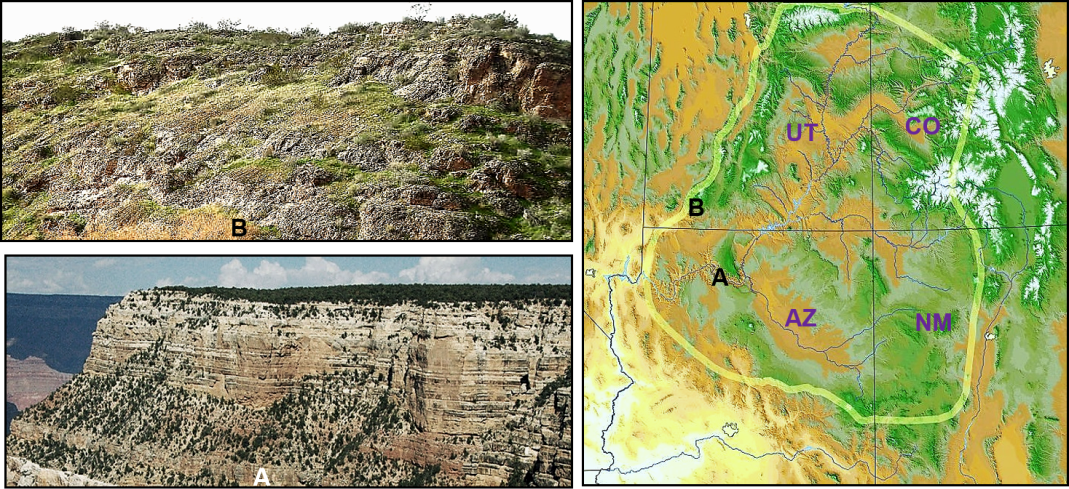
Closer to home here in St. George, you can still visit and see the Kaibab Formation on the Colorado Plateau. It is exposed in low hills along River Road just past the turn-off to Little Valley at Horsemans Park Drive. Although new housing developments have sprung up like mushrooms along this part of River Road, the low hills are still accessible. Although in both areas the Kaibab Formation are the same geologic age, in contrast to these rocks at the Grand Canyon, the Kaibab is the oldest rock unit exposed at the surface here in St. George (Figure 2).
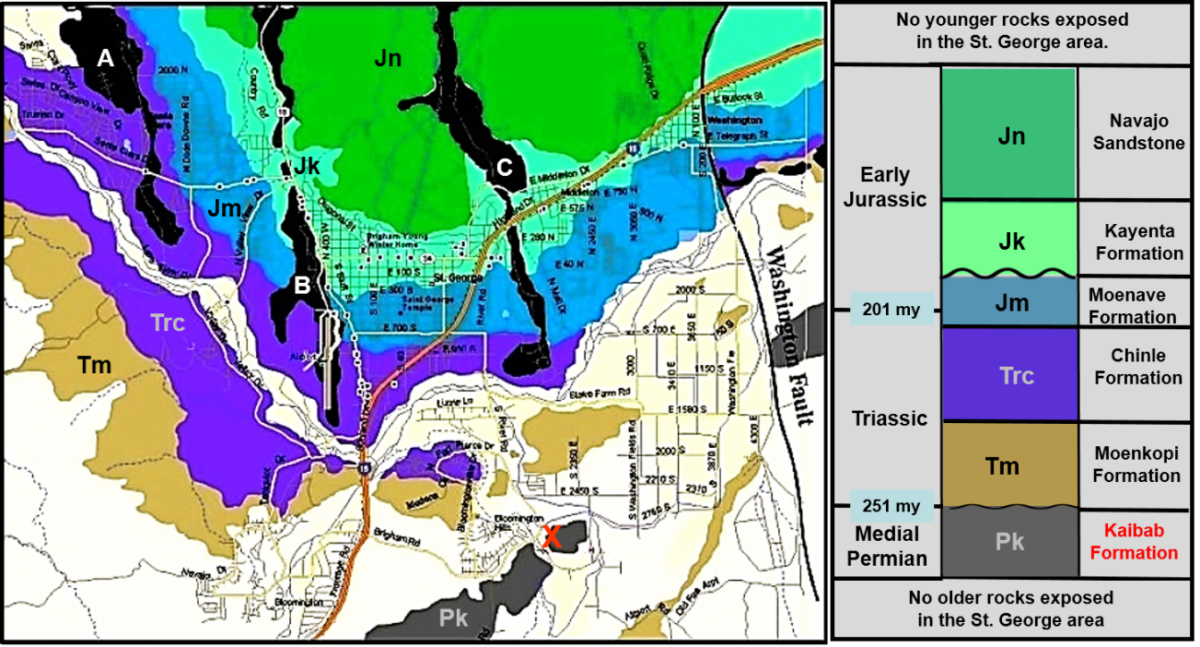
The mental trip: The present is the key to the past
Once upon a time, as geologists tell it — actually about 270 million years ago — what is now St. George was in the middle of wide ocean seaway (Figure 3). Well, that is easy to say. The question is whether it can be proven. The answer is “yes,” by studying preserved evidence of the rock and fossil records and applying various geologic principles that have been established over the past 350 years.
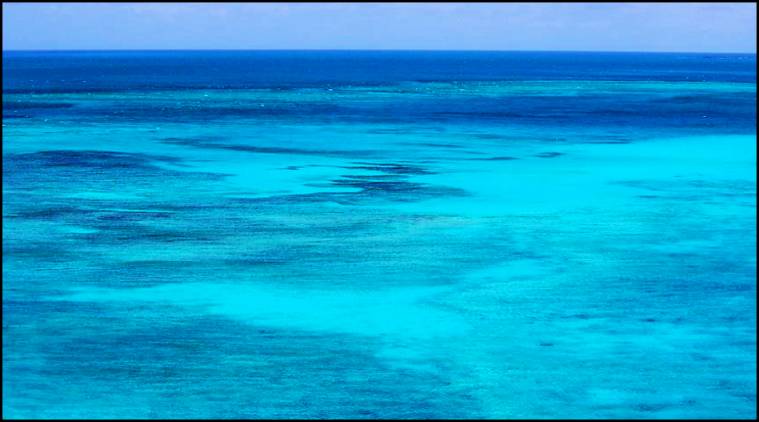
So back 270 million years ago, during Permian time, a reconstruction of the seaway where the future St. George was to be located can be seen in Figure 4, which represents a paleogeographic map. Maps like this are based on a lot of basic geologic field work and identification of rocks and fossils. The distribution of this Permian seaway is therefore based on recognition of the widespread distribution of the Kaibab Formation, which is found in Nevada, Arizona, Utah, and Colorado. Similarly aged rocks and fossils occur in other states, but they have been given different formation names. But because these different named rocks have very similar characteristics and fossils, they are also used to reconstruct the extent of this sea.
Geophysical evidence, isotopic studies of carbon and oxygen elements in the rocks and fossils, and paleontological data collected from the rocks that formed in this seaway indicate that St. George was located roughly 15–20 degrees north of the equator. Therefore, the climate would have been subtropical, and water in this seaway would have been warm and shallow, very much like the Bahamas today. Clearly, the ancient geography around St. George was quite different than what we see here today.
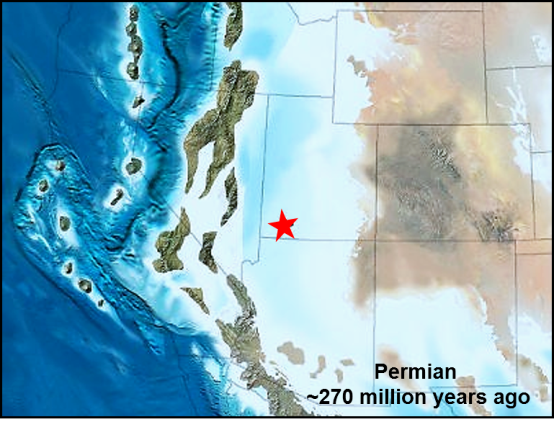
During Permian time, successive layers of mostly calcium carbonate sediments were forming within this widespread warm, shallow sea, and they were being deposited along with remains of a variety of marine-dwelling organisms. As they became buried, these sediments were lithified into rocks, and many of the remains of dead organisms were incorporated into the rocks and became fossilized. As noted above, geologists have named these rocks the Kaibab Formation.
The Kaibab is mostly carbonate sedimentary rock consisting of limestone (calcium carbonate) and dolostone (calcium/magnesium carbonate). But in some areas, it contains significant amounts of sandstone. Based on comparisons with modern environments such as the Bahamas or the Florida Keys, these rocks and fossils provide evidence of the conditions existing in this widespread sea and the processes by which they formed (Figures 5 and 6).

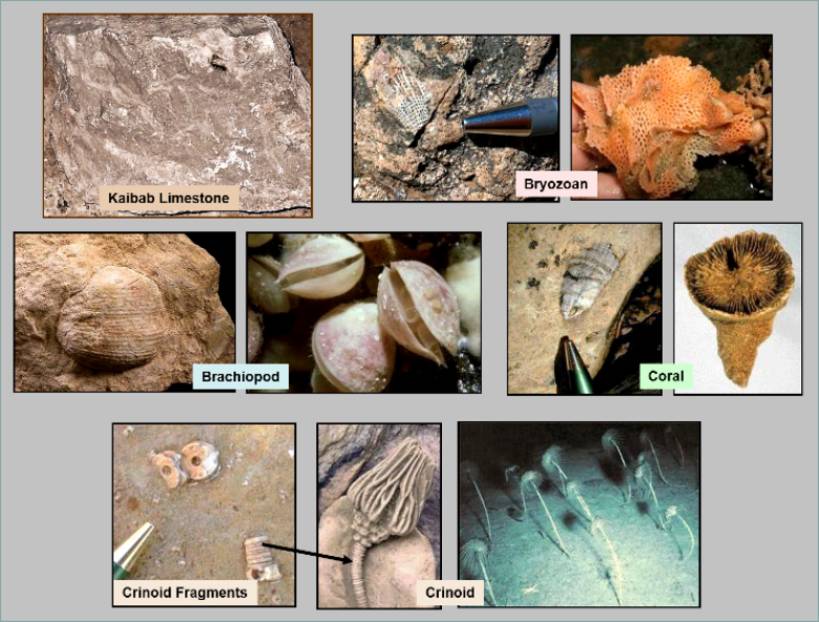
So here in our geological wonderland, we recognize that we were once in the middle of a widespread sea that existed in a tropical environment. That is quite different from what was described in a previous article, which indicates that St. George was once in the middle of a widespread tropical desert of sand. We also know from a previous article that we were once in a large freshwater lake that was populated by a variety of dinosaurs and other animals and plants.
It is a bit hard to mentally grasp such changes because we are not used to thinking in terms of hundreds of millions or even a few million years and that in such long intervals of geologic time, immense changes can occur and have occurred on Earth (Figure 7).
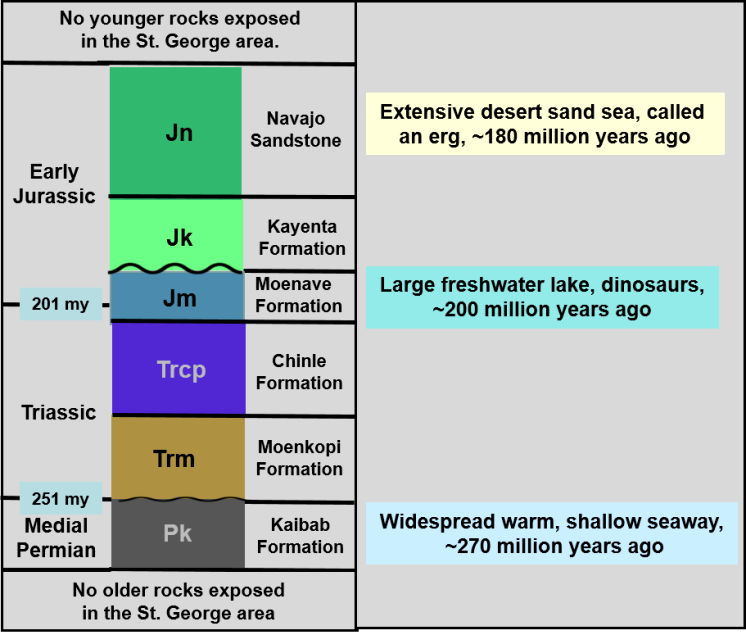
Articles related to “Our Geological Wonderland: An ancient seaway, right here in St. George”
Our Geological Wonderland: Dinosaur Discovery Site at Johnson Farm
The famous inverted topography of basalt lava ridges of St. George



